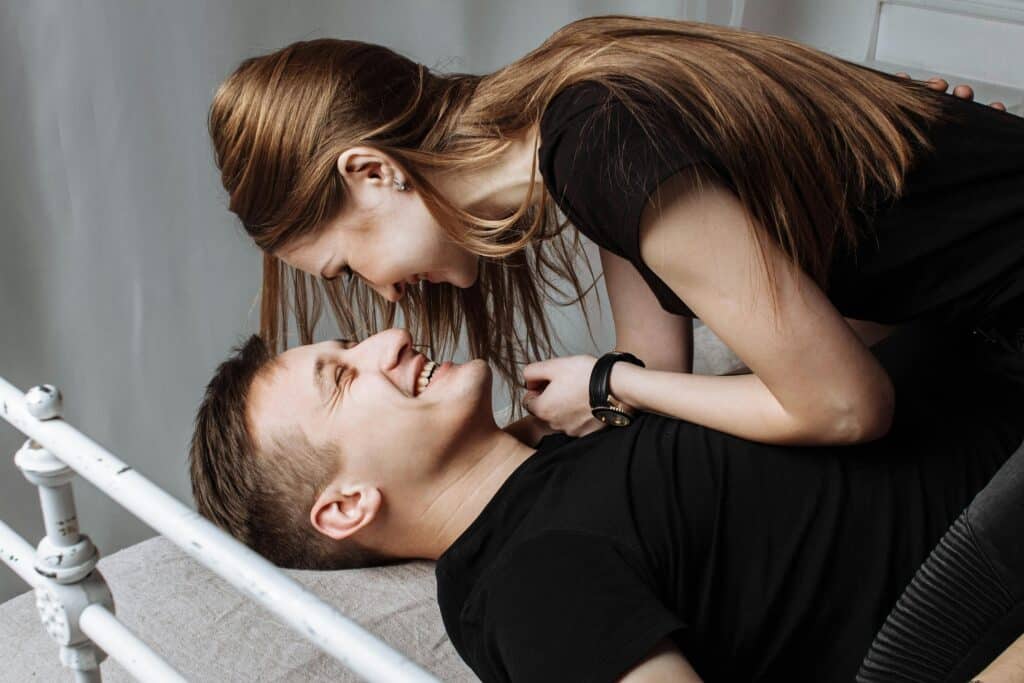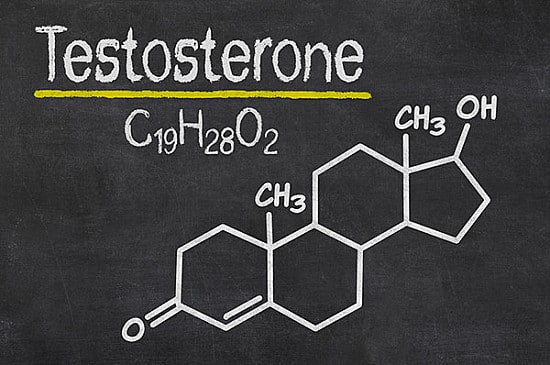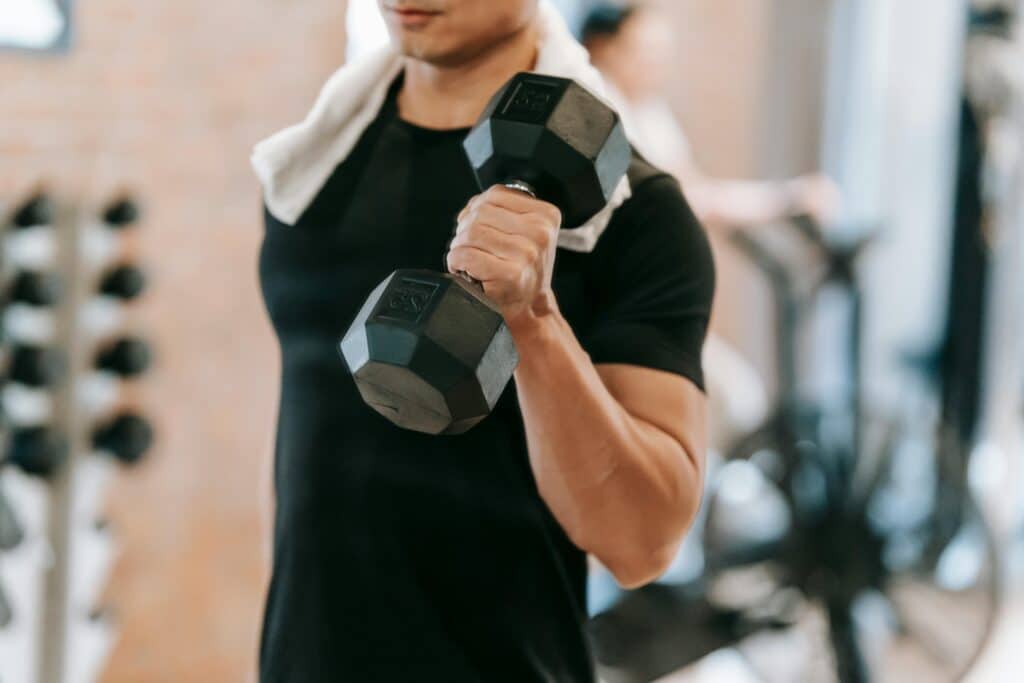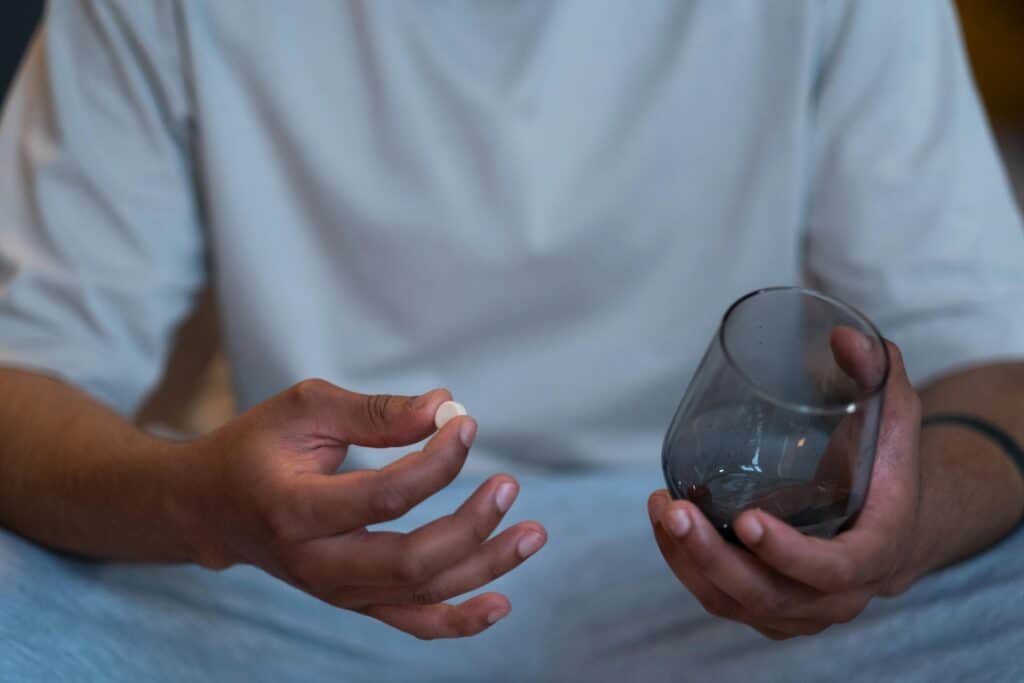If you’re undergoing testosterone optimization therapy, you’re likely familiar with HCG (human chorionic gonadotropin).
HCG is known to provide multiple benefits outside of its primary outcome of increased testosterone levels:
- Enhance libido
- Maintain fertility,
- Prevent testicular atrophy
- Improve cognitive function
However, the FDA recently instructed all HCG manufacturers to cease commercial production and sales, creating challenges for patients seeking this treatment.
Fortunately, there’s an alternative that may elevate testosterone levels just as well.
While also being more efficacious and possessing fewer side effects compared to HCG.
Of course, I AM talking about Gonadorelin.
In this article, we’ll discuss the differences between Gonadorelin vs hCG and explore which is a superior alternative for testosterone treatment in men.
Table of Contents
ToggleWhat Is the Difference Between Gonadorelin vs HCG?

Gonadorelin is a synthetic peptide composed of 10 amino acids and has a molecular weight of 1182 g/mol.
To be more exact, it is a gonadotropin hormone-releasing hormone (GnRH) analog produced by the hypothalamus and stimulates the pituitary gland to produce and secrete luteinizing hormone (LH) and follicle-stimulating hormone (FSH).
Gonadorelin promotes the release of eggs from the ovary in women, resulting in regular ovulation and higher chances of pregnancy.
In men, it promotes sperm production and mimicks the hormonal surge experienced during puberty.
Both effects stimulate testosterone production, further supporting growth and sexual development.
Additionally, it helps increase seminal volume and reverse testicular atrophy in men.
Buth in both men and women, Gonadorelin regulates the hypothalamic-pituitary-gonadal (HPG) axis.
Since it’s mostly used for research purposes to assess how the pituitary and hypothalamus glands work in women with abnormal menstrual cycles, it is a less popular option for increasing testosterone levels compared to hCG.
hCG (a.k.a. human chorionic gonadotropin), on the other hand, is a naturally occurring hormone that is 237 amino acids long and is produced in women’s placenta.
Non-pregnant women and adult men secrete small amounts of hCG in their gonads.
In pregnant women, hCG helps mimic LH function and promotes testicular function in male fetuses until their pituitary gland gets matured enough to take over this biological role.
Today, hCG is approved by the FDA for use in young men with undescended testes and/or are hypogonadal due to pituitary gland deficiency.
Gonadorelin vs HCG for Testosterone Levels and Production

Both gonadorelin vs hCG can increase your levels of testosterone.
As mentioned above, these peptides confer this benefit by instructing LH to stimulate the testes/ovaries to release steroid hormones.
Specifically, Gonadorelin can help increase your testosterone levels just as testosterone replacement therapy with HCG does.
As evidenced in The Journal of Clinical Endocrinology and Metabolism, men with testosterone deficiency who used Gonadorelin therapy experienced stimulated sexual maturation:
“To determine predictors of outcome in terms of TV and sperm count, we studied 76 IHH men (38% with anosmia) undergoing GnRH therapy for 12-24 months.
The population was stratified according to the baseline degree of prior pubertal development: absent (group 1, n = 52), partial (group 2, n = 18), or complete (adult onset HH; group 3, n = 6).
Cryptorchidism was recorded in 40% of group 1, 5% of group 2, and none in group 3. Pulsatile GnRH therapy was initiated at 5-25 ng/kg per pulse sc and titrated to attain normal adult male testosterone (T) levels. LH, FSH, T, and inhibin B (IB) levels were measured serially, and maximum sperm count was recorded. A longitudinal mixed effects model was used to determine predictors of final TV.
LH (97%) and T (93%) levels were normalized in the majority of IHH men. Groups 2 and 3 achieved a normal adult testicular size (92%), FSH (96%), IB levels (93%), and sperm in their ejaculate (100%).
However, given their prior complete puberty and thus primed gonadotropes and testes, group 3 responded faster, normalizing androgen production by 2 months and completing spermatogenesis by 6 months.
In contrast, group 1 failed to normalize TV (11 ± 0.4 ml) and IB levels (92 ± 6 pg/ml) by 24 months, despite normalization of their FSH levels (11 ± 2 IU/liter). Similarly, sperm counts of group 1 plateaued well below the normal range (median of 3 × 106/ml) with 18% remaining azoospermic.
The independent predictors of the outcome of long-term GnRH therapy were: 1) the presence of some prior pubertal development (positive predictor; group effect (β) = 4.3; P = 0.003); 2) a baseline IB of less than 60 pg/ml (negative predictor; β = −3.7; P = 0.009); and 3) prior cryptorchidism (negative predictor; β = −1.8; P = 0.05).
Notably, anosmia was not an independent predictor of outcome when adjusted for other baseline variables.
Our conclusions are:
1) Pulsatile GnRH therapy in IHH men is very successful in inducing androgen production and spermatogenesis;
2) Normalization of the LH-Leydig cell-T axis is achieved more uniformly than the FSH-Sertoli cell-IB axis during GnRH therapy; and
3) Favorable predictors for achieving an adult testicular size and consequently optimizing spermatogenesis are prior history of sexual maturation, a baseline IB greater than 60 pg/ml, and absence of cryptorchidism.”
Similarly, in a study published in the Journal of Human Reproduction, adolescent boys had induced testicular growth and sperm production after being given low doses of Gonadorelin:
“In order to induce pubertal development, low-dose, pulsatile gonadotrophin-releasing hormone (GnRH) was administered i.v. in adolescent boys and girls with an isolated hypogonadotrophic hypogonadism.
The first study included GnRH treatment in 21 male patients with the goal of initiating testicular growth and spermatogenesis; in the second study, GnRH was administered in three adolescent boys and two girls in an increasing pulse frequency as well as pulse dose in order to imitate the ‘physiological’ pubertal changes.
In the first study, gonadotrophin and testosterone levels increased in all patients, and testicular growth also occurred.
When GnRH treatment was discontinued, spermatogenesis was present in 14 out of the 17 patients examined and was observed in another patient during subsequent human chorionic gonadotrophin (HCG) treatment.
Ultimately, 15 out of the 19 patients developed spermatozoa. In the second study, small increases in luteinizing hormone (LH) and follicle-stimulating hormone (FSH) were observed during a low-frequency GnRH schedule, followed by a further rise during the ‘physiological’ schedule with a 90-min pulse interval; testosterone and oestradiol also increased.
An increased secretion of growth hormone occurred only in boys during GnRH treatment after their testosterone levels had increased. In girls, none of the GnRH treatment schedules was associated with an increase in growth hormone.
Pulsatile GnRH treatment is thus feasible as a method of inducing testicular growth and spermatogenesis.
A GnRH treatment schedule with an increasing pulse frequency and pulse dose can imitate the ‘physiological’ pubertal changing pattern of gonadotrophins just as well as the use of sex steroids. However, with respect to growth hormone secretion, GnRH will induce an increase in boys only.”
These studies are just a small sample from the medical literature showing Gonadorelin can help increase testosterone, boost sperm production and reduce the risk of testicular shrinkage.
On the other hand, you can use hCG alongside or following testosterone replacement therapy (TRT) to help initiate the natural production of testosterone.
In a study published in The Journal of Sexual Medicine, 49 men with infertility issues who were treated with 3000 hCG for 4.6 months showed a 96% improvement in their sperm production:
“We retrospectively reviewed charts from two tertiary care infertility clinics to identify men presenting with azoospermia or severe oligospermia (<1 million sperm/mL) while taking exogenous testosterone.
All were noted to have been placed on combination therapy, which included 3,000 units HCG subcutaneously every other day supplemented with clomiphene citrate, tamoxifen, anastrozole, or recombinant follicle-stimulating hormone (or combination) according to physician preference.
Clinical outcomes, including hormone values, semen analysis, and clinical pregnancies, were tracked.
Forty-nine men were included in this case series. Return of spermatogenesis for azoospermic men or improved counts for men with severe oligospermia was documented in 47 men (95.9%), with one additional man (2.1%) having a documented pregnancy without follow-up semen analysis.
The average time to return of spermatogenesis was 4.6 months with a mean first density of 22.6 million/mL. There was no significant difference in recovery by type of testosterone administered or supplemental therapy. No men stopped HCG or supplemental medications because of adverse events.”
When Is Gonadorelin a Preferred Alternative to hCG in TRT?

Gonadorelin and hCG can also elevate estrogen production in men in addition to increasing testosterone levels.
BUT… hCG can increase estrogen levels a bit more, especially in men with higher testosterone levels.
hCG can directly stimulate estrogen production from the testicles, resulting in higher-than-expected levels of estrogen in males until their dosage can be adjusted.
(NOTE: Higher estrogen levels are NOT something to fear or avoid, but rather something for a experiential-based physician to keep an eye on in the presence of higher levels of visceral body fat and inflammation due to insulin resistance )
That’s one of the reasons why Gonadorelin is sometimes perceived as the preferred alternative to hCG.
Since Gonadorelin is a bioidentical hormone (i.e. it mimics the body’s natural GnRH), you can use it alongside TRT.
Combining Gonadorelin with TRT helps maintain and improve fertility by stimulating the production of testosterone and sperm.
It can also help to prevent/reverse testicular atrophy that may occur with TRT use.
Therefore, using the peptide Gonadorelin is not just a quick fix; it’s a long-term strategy for maintaining your testosterone levels.
It accomplishes this without the bothersome side effects associated with hCG, such as depression, headaches, allergic reactions, and restlessness.
And while Gonadorelin may cause skin allergic reactions and suppress the HPG axis at high doses, it generally has fewer specific side effects.
Finally, considering it’s more readily accessible than hCG, you don’t need to worry about running out anytime soon.
Gonadorelin Dosage and Administration

These two compounds have different storage needs.
Both HCG and Gonadorelin should always be kept refrigerated before and after reconstitution.
You can mix both peptides with water for injection, without needing alcohol or or any additional compounds.
Since water isn’t naturally bacteria-resistant like alcohol is, you must specially prepared water to avoid contamination via bacterial and/or fungal growth.
According to the Journal of Translational Andrology and Urology, using 1500 to 5000 IU of hCG 2-3 times a week for 3 to 6 months can boost sperm and testosterone production in men.
This can be administered intramuscularly or into a muscle with the same dosage.
Additionally, using hCG alongside testosterone replacement therapy (TRT) at 500 IU can help avoid the suppression of testosterone during the therapy.
Meanwhile, Gonadorelin can increase LH levels and stimulate the HPG axis after a single injection of 100 mcg.
Similar to hCG, it is not recommended to use gonadorelin daily at higher doses due to the stimulation of the body’s natural negative feedback loop, which can lead to the suppression of testosterone synthesis and LH.
Therefore, it’s best only to use low doses of these compounds to stimulate testosterone production effectively.
Jay’s Closing Thoughts
I AM always a strong proponent of hCG used concomitantly with Therapeutic Testosterone for maintaining fertility, as I’ve written about in Chapters 10 and 12 of The TOT Bible.
You should give those chapters a read before starting the use of HCG in tandem with working alongside a hormone optimization physician who has direct experience with using it (either as a monotherapy or alongside testosterone).
However, I do want to leave behind three insights from the book that will provide further guidance:
“hCG should not be started with TOT until 6 weeks AFTER you establish baseline lab work. This allows your physician to properly understand what is happening to your endocrine system when exogenous testosterone is used by itself.”
“There is research indicating it works especially well with younger men who don’t want to disturb their endogenous (natural) testosterone production while maintaining their fertility at the same time. Dr. Crisler (interviewed in Chapter 12) recommends using hCG at 250-500 IU (international units) per shot as part of his injection protocol (a.k.a. The Crisler Method687). hCG can also be used daily at 100 IU with great success, due to its ability to produce randomness in the serum androgen profile at varying points in the day. As we noted earlier in the book, this dosing strategy mimics your body’s natural testosterone production.”
“However, it’s important to note that experiences on hCG can be very subjective. Some users feel great without hCG and others feel great on it. If you are using it when first starting TOT, it may be difficult to determine what its effects are, especially in comparison to testosterone administered by itself (i.e. without any other drugs or medications). The only thing you can do is experiment on yourself, noting any physiological changes or side effects, while also drawing labs to document variations over time.”
Is Gonadorelin the Ideal Alternative to HCG in Testosterone Therapy?

While Gonadorelin and HCG share similarities, they differ in their simplicity and side effects.
Gonadorelin may have broader therapeutic potential compared to HCG due to fewer adverse effects.
Individual responses still vary, and some patients may benefit more from HCG.
Gonadorelin’s ease of prescription and availability make it a convenient alternative to HCG, the latter of which can (and is) facing supply and pricing challenges.
Overall, both options offer benefits in testosterone therapy, but Gonadorelin may be a more favorable choice for most men.
Limitless Life Nootropics, the industry’s only source for third-party-tested products, doesn’t currently have Gonadorelin in stock.
However… they DO have some of the best formulations of testosterone-boosting peptides on the market.
And don’t forget they offer the BEST deals on both price and peptide purity.
Use code JAY15 at the checkout cart for 15% off!
But before you start injecting these peptides into your body recklessly, make sure you first read the Top 10 Mistakes People Make When Starting Therapeutic Peptides FREE PDF!
Seriously, this short e-book will save you a lot of wasted money and poorly spent time (not to mention preventing you from potential self-inflicted injuries).
And the emails I’ll send you after downloading the book contain an EXCLUSIVE 33% OFF code for my Peptides Demystified Course, so don’t miss out!
Raise Your Vibration To Optimize Your Love Creation!
PS — Want to learn more about reliably boosting your total and free testosterone levels while maintaining fertility?
Join me and hundreds of other male and female biohackers in The Fully Optimized Health Private Membership Group to learn how you can use peptides to increase your testosterone levels and optimize your health in your 30s and beyond.
We’re excited to discuss biohacking, health, and life optimization through peptide therapy with you.
See you on the other side!



